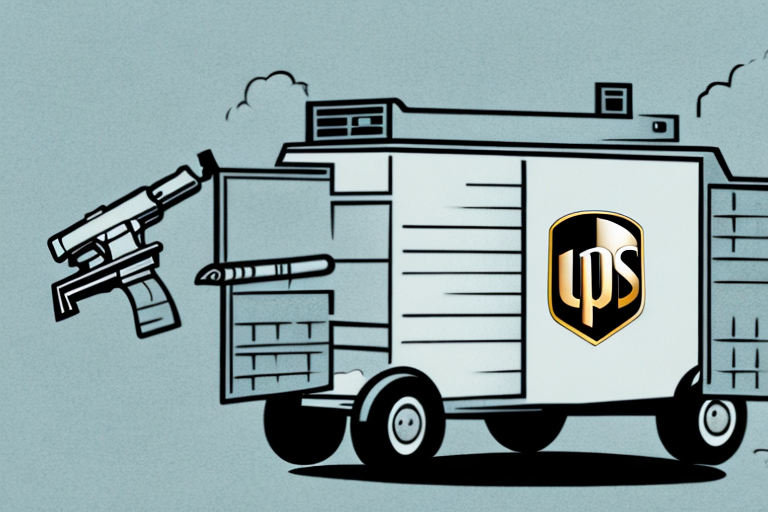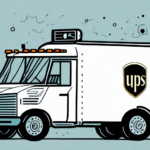Legal and Regulatory Considerations
Federal and State Laws
Before shipping your firearm with UPS, it is crucial to understand the federal and state laws that regulate firearm shipments. Federal laws, governed by the Bureau of Alcohol, Tobacco, Firearms and Explosives (ATF), set the baseline requirements for transporting firearms across state lines. Additionally, individual states may have specific regulations that dictate how firearms can be shipped within their jurisdiction. For instance, some states require specific permits or have restrictions on the types of firearms that can be shipped.
Documentation and Licensing
When shipping firearms, UPS mandates that all packages declaring firearms include proper documentation. This typically involves:
- A completed Firearms Shipping Authorization
- A copy of the sender's Federal Firearms License (FFL) if applicable
- A copy of the recipient's valid identification and, in some cases, their FFL
Failure to provide accurate documentation can lead to shipment delays, confiscation of the firearm, and potential legal repercussions.
UPS Firearms Shipping Policies
Allowed and Prohibited Firearms
UPS has clear guidelines on the types of firearms permitted for shipment. While standard firearms such as rifles and handguns are generally allowed, certain items are strictly prohibited, including:
- Fully automatic firearms
- Silencers and suppressors
- Explosive devices
For a complete list of prohibited items, refer to UPS's official Firearms Shipping Policy.
Packaging and Labeling Requirements
UPS requires that all firearms be shipped in a hard-sided container to ensure maximum protection during transit. Additionally, packages must be clearly labeled with the following:
- "Firearms"
- "Adult Signature Required"
- "Perishable - Keep Away From Heat" (if applicable)
Proper labeling ensures that the shipment is handled according to UPS's specialized procedures for firearms.
Authorized Facilities
All firearm shipments must be processed through an authorized UPS facility. These facilities are equipped to handle firearms shipments securely and in compliance with all legal requirements. Only licensed dealers or manufacturers are permitted to ship firearms through UPS.
Preparing and Packing Your Firearm
Ensuring Firearm is Unloaded and Cleaned
Prior to packing, verify that your firearm is fully unloaded. Removing all ammunition from both the firearm and its surroundings prevents accidental discharge and complies with shipping regulations. Additionally, cleaning your firearm ensures that it remains in good condition during transit.
Disassembly and Wrapping
Disassembling your firearm into its main components can provide better protection and reduce the risk of damage. Each part should be individually wrapped using bubble wrap or foam padding to cushion against impact. This step is essential for maintaining the integrity of your firearm during shipping.
Choosing the Right Packaging Materials
Selecting appropriate packaging materials is vital for safeguarding your firearm. Recommended materials include:
- Heavy-duty gun cases with firm outer shells
- Internal padding like foam inserts or packing peanuts
- Double-walled cardboard boxes for added protection
Using high-quality packaging ensures that your firearm is protected from shocks and impacts during transit.
Ensuring Safe and Insured Shipping
Packing and Labeling According to UPS Standards
Proper packing and labeling are critical for compliance and safety. Ensure that your firearm is securely packed in a sturdy container and that all required labels are affixed clearly on the package. This includes indicating that the package contains a firearm and specifying the handling instructions.
Insurance Options and Recommendations
UPS offers a firearm shipping insurance policy covering up to $5,000 per shipment. However, this coverage does not protect against loss or damage resulting from improper packaging. To ensure complete protection, consider the following:
- Verify that your packaging meets UPS's standards to qualify for insurance coverage.
- Purchase additional insurance if the firearm's value exceeds $5,000.
- Use third-party insurance providers for extended coverage options.
Insuring your shipment provides financial protection and peace of mind in case of unforeseen circumstances.
International Shipping with UPS
Import/Export Regulations
Shipping firearms internationally involves navigating complex import and export regulations. Each country has its own set of rules governing the importation of firearms, which may include restrictions on specific types of firearms, licensing requirements, and documentation standards. It is essential to consult the official guidelines of the destination country before initiating an international shipment.
Documentation and Licensing
When shipping firearms internationally, ensure you have the necessary documentation, which may include:
- Export licenses from the sender's country
- Import permits for the destination country
- Detailed invoices and shipping manifests
Proper documentation is crucial to prevent shipment delays and legal complications.
Packaging and Carrier Services
Use specialized packaging designed for international shipments to protect your firearm during transit. UPS offers international firearms shipping services that include secure packaging options and comprehensive tracking. Ensure that your firearm complies with both UPS's and the destination country's packaging standards to facilitate smooth delivery.
Best Practices for Receiving Firearm Shipments
Inspecting Shipment
Upon receiving your firearm shipment, conduct a thorough inspection to ensure that the firearm is in the same condition as it was when shipped. Check for any signs of damage and verify that all components are intact.
Compliance with State Laws
Ensure that the receipt of the firearm complies with your state's laws. Some states require specific permits or have restrictions on certain types of firearms. Verify that the recipient is legally authorized to receive the firearm.
Working with Licensed Dealers
For added security and compliance, consider working with licensed firearms dealers for both shipping and receiving transactions. Licensed dealers are well-versed in the legal requirements and can help facilitate a safe and legal transfer of firearms.
Common Mistakes and Cost Comparison
Avoiding Packaging and Labeling Mistakes
Common errors when shipping firearms include:
- Using inadequate packaging materials
- Incorrectly labeling the package
- Omitting essential documentation
These mistakes can lead to shipment delays, legal issues, and potential loss or damage of the firearm.
Comparing UPS with Other Carriers
When selecting a carrier for shipping firearms, compare factors such as:
- Cost: UPS rates are competitive, but it's beneficial to compare with other carriers like FedEx or DHL to find the most economical option.
- Expertise: Some carriers may offer specialized services for firearms, including enhanced tracking and secure handling.
- Restrictions: Different carriers have varying restrictions on firearm types and destination locations.
Always ensure that the carrier you choose complies with all relevant firearms shipping regulations to avoid complications.
Conclusion
Shipping firearms with UPS can be straightforward if you adhere to all legal requirements and UPS's shipping policies. Ensure that you are well-informed about federal and state laws, use proper packaging materials, and secure appropriate insurance coverage. By following best practices and avoiding common mistakes, you can confidently ship your firearm safely and legally with UPS.
For more detailed information and updates on firearms shipping, visit the official ShipScience website.






















